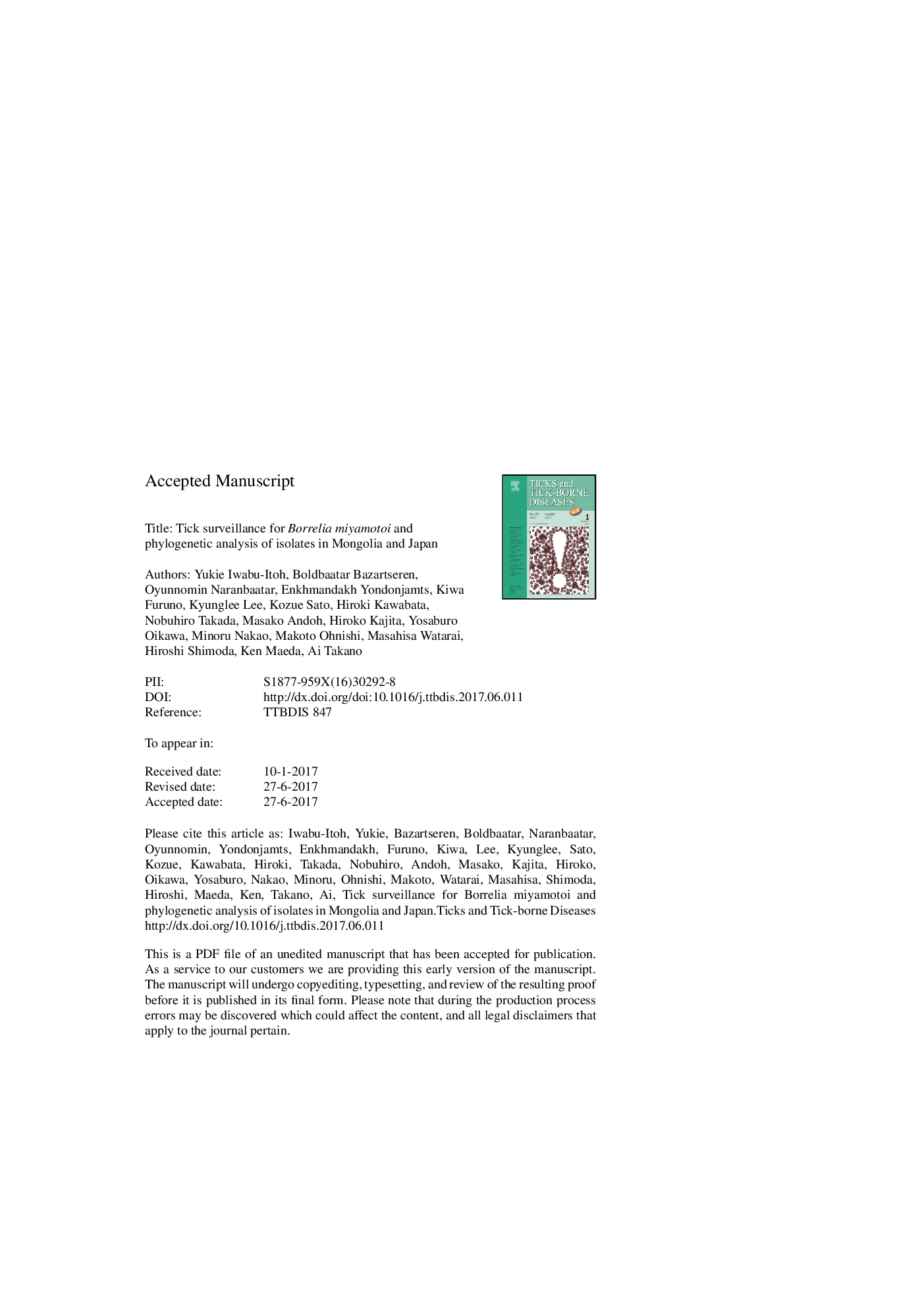| Article ID | Journal | Published Year | Pages | File Type |
|---|---|---|---|---|
| 5546268 | Ticks and Tick-borne Diseases | 2017 | 35 Pages |
Abstract
Borrelia miyamotoi, recently recognized as a human pathogenic spirochete, was isolated from Ixodes persulcatus and I. ovatus in northern Mongolia and Honshu Island, a major island in Japan. Although no human B. miyamotoi infections have been reported in Mongolia, the prevalence of B. miyamotoi in ticks from Mongolia is higher than that in ticks from Hokkaido, Japan, where human cases have been reported. Moreover, the multi-locus sequence analysis of cultured isolates revealed that B. miyamotoi isolates in Mongolia belong to the Siberian type, a sequence type that was originally reported from isolates from I. persulcatus in Hokkaido. Thus, there is a possibility of unrecognized human B. miyamotoi infections in Mongolia. Moreover our data support the hypothesis of clonal expansion of the Siberian type B. miyamotoi. In contrast, although the isolates were found to belong to the Siberian type B. miyamotoi, two isolates from I. persulcatus in Honshu Island were identified to be of a different sequence type. Furthermore, B. miyamotoi isolates from I. ovatus were distinguishable from those from I. ricinus complex ticks, according to genetic analysis. In this study, we show that there may be some genetic diversity among B. miyamotoi in ticks from Honshu Island.
Keywords
Related Topics
Life Sciences
Agricultural and Biological Sciences
Animal Science and Zoology
Authors
Yukie Iwabu-Itoh, Boldbaatar Bazartseren, Oyunnomin Naranbaatar, Enkhmandakh Yondonjamts, Kiwa Furuno, Kyunglee Lee, Kozue Sato, Hiroki Kawabata, Nobuhiro Takada, Masako Andoh, Hiroko Kajita, Yosaburo Oikawa, Minoru Nakao, Makoto Ohnishi,
